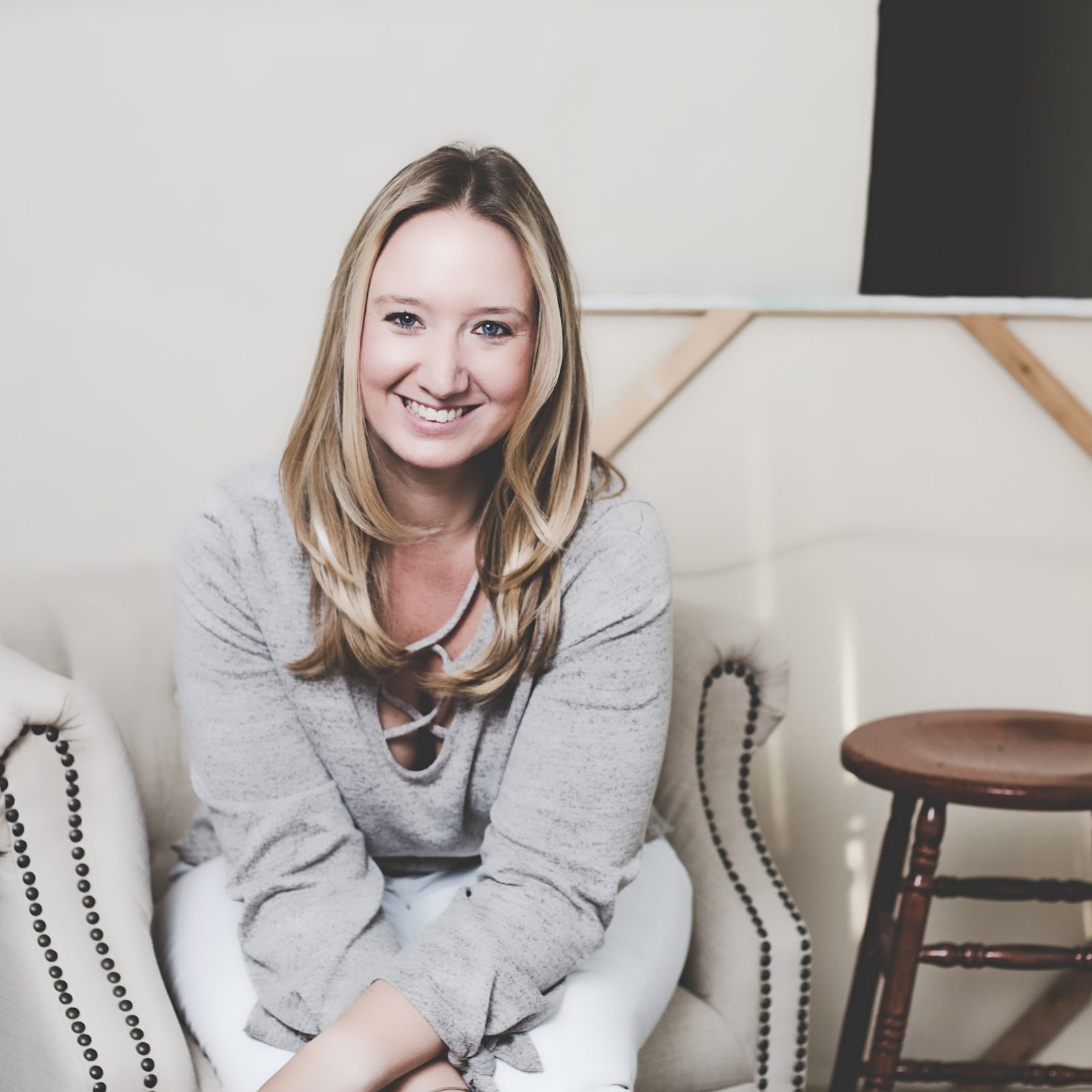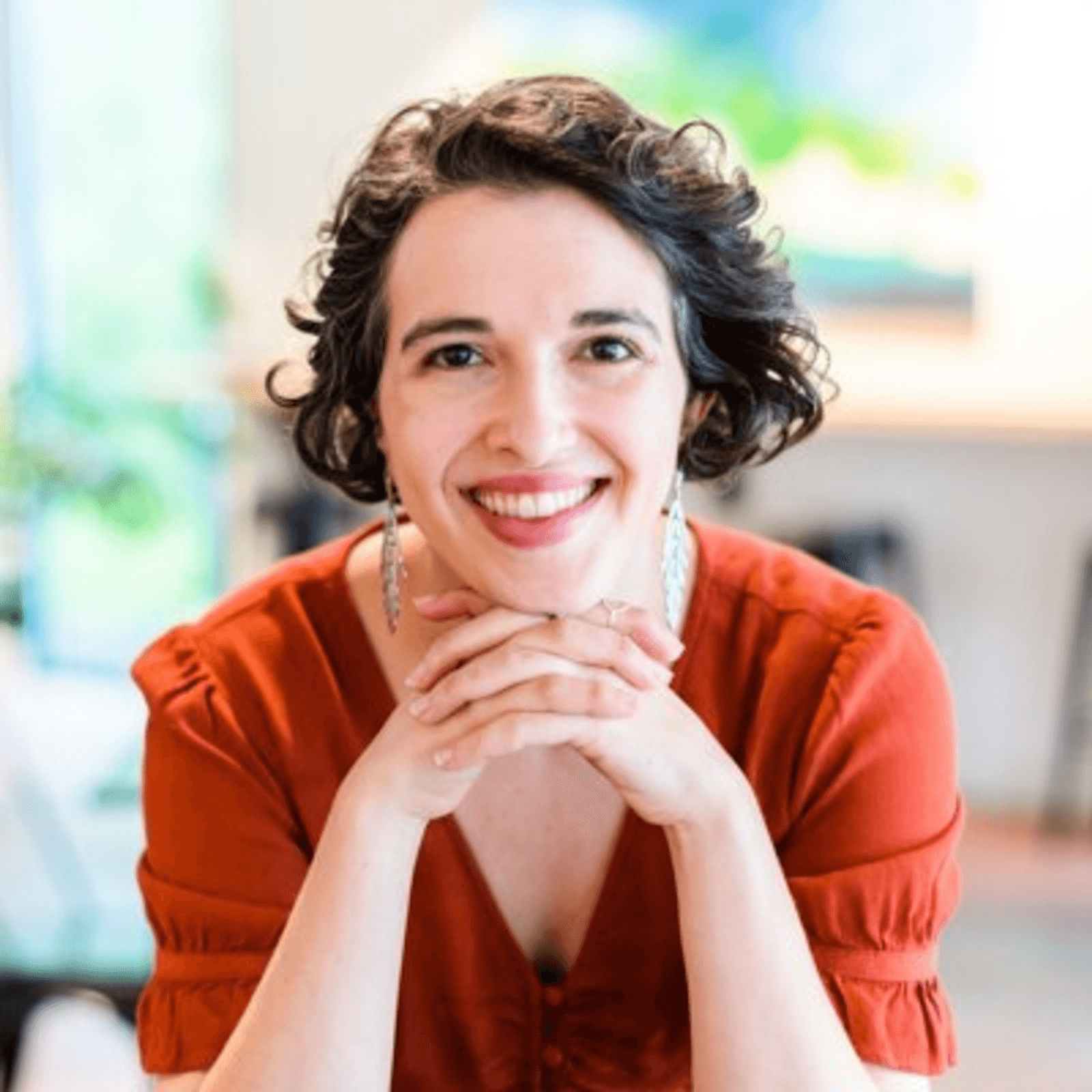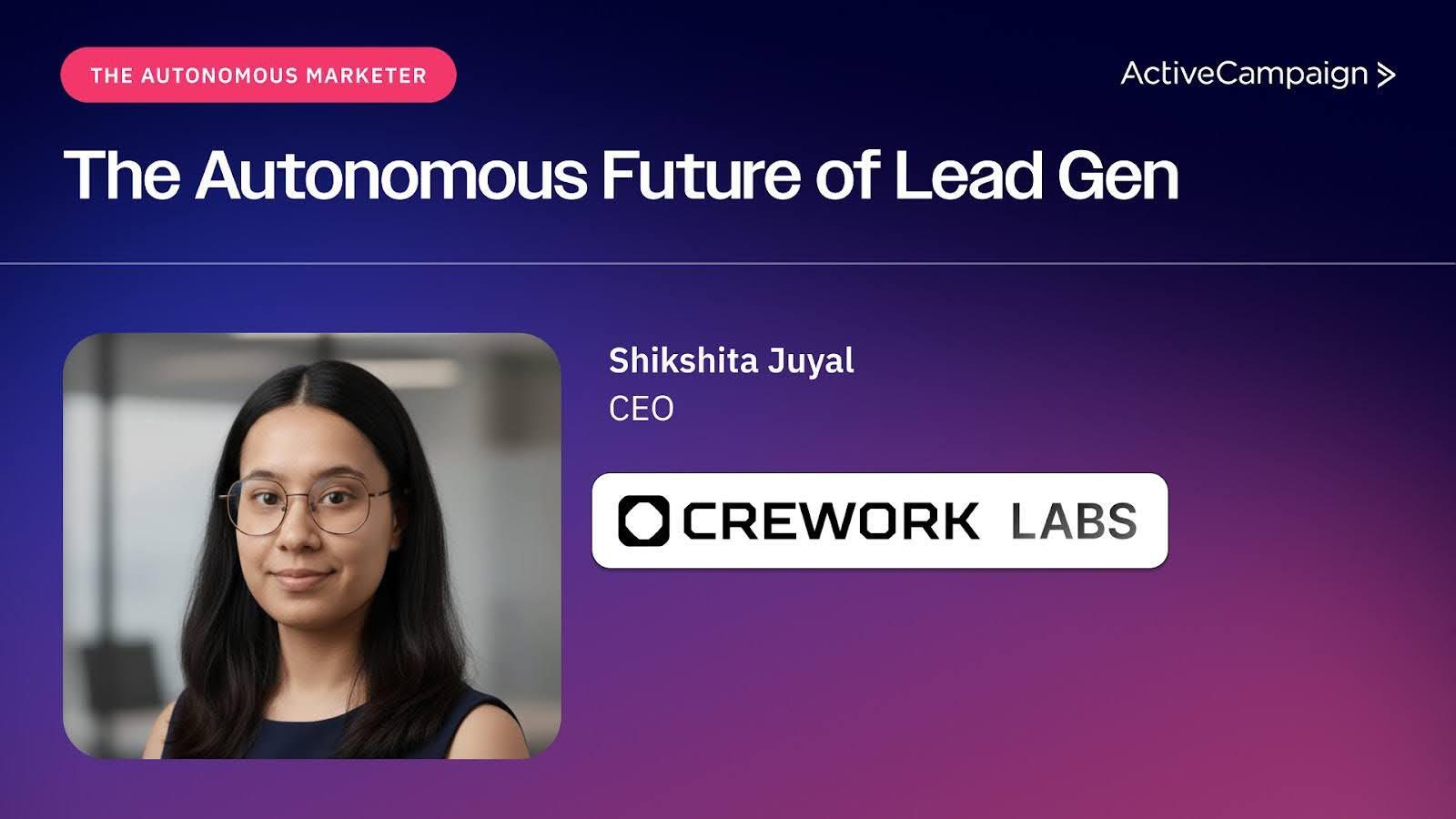It’s widely accepted that inbound sales and marketing teams are the holy grail for revenue growth in software startups.
Yes, outbound has its place, but inbound delivers higher intent leads and puts the power of the sales process in the customer’s hands.
However, for this process to be effective, you need a powerful lead generation strategy that attracts new buyers but doesn’t come across as overly sales-y.
A pretty delicate balance, right?
In this article, you’ll learn everything you need to know about lead generation, from defining what a “lead” even is to 5 powerful channels for capturing new prospects.
What is lead generation?
Lead generation is the process of attracting and capturing potential customers (a.k.a. "leads") who might be interested in your product or service. Think of it as starting a conversation with people who could eventually become paying customers.
It usually involves getting someone's contact information, like their email or phone number, so you can follow up with them and enter their details into your CRM or sales platform. Businesses do this in different ways, such as offering free resources (like ebooks or webinars), running ads, or having sign-up forms on their website.
Once you’ve got a lead, the goal is to nurture that relationship, build trust, and eventually turn them into a customer. At some point, you need to start engaging in a one-on-one conversation with each customer, which is why we generate leads, so that our marketing or sales teams can initiate this contact.

What is lead generation? Let’s look at an example.
Say your primary channel for customer acquisition is SEO. You’ve developed many educational, insightful, and actionable blog posts that help readers solve problems related to your industry and solution, and subtly point toward your product.
At the end of the blog post, you’ll place a lead generation magnet—a valuable content asset that customers can have for free, as long as they hand over their email address.
Take this example from Demodesk. At the end of a sales-related blog post, they drop a content upgrade: a free webinar on running discovery calls.

This lead magnet creates a win-win situation: Readers get access to more high-quality content, and Demodesk gets a potential sales lead.
How does lead generation work? (Example walkthrough)
Lead generation is a very specific activity—the part of the customer journey where the buyer hands over their details (usually an email but sometimes a phone number) in exchange for some kind of offer (like an ebook).
There are, however, a few steps that typically come before that point.
1. Identify your target audience
Before you start collecting leads, you need to know who you’re trying to reach. This means figuring out what kind of people would actually be interested in your product or service.
Example: Meet FitFuel
Let’s say we’re running FitFuel, a company that sells high-protein snack bars for busy professionals. Our ideal customers might be young professionals who want quick, healthy snacks but don’t have time for meal prep.
To define our audience, we ask:
- What problems do they have? (They need quick, healthy snacks.)
- Where do they hang out online? (Probably Instagram, LinkedIn, and fitness blogs.)
- What motivates them? (Staying healthy while balancing a busy lifestyle.)
Once we have this info, we can tailor everything to match what our audience cares about—our ads, content, and messaging.
2. Attract online visitors
Now that we know who we’re targeting, it’s time to get their attention. This usually happens through content marketing, paid ads, social media, or SEO.
How FitFuel does it
To attract the right audience, FitFuel might:
- Write articles like "5 Healthy Snacks for Busy Workdays."
- Run Instagram ads showing professionals enjoying FitFuel bars at their desks.
- Partner with fitness influencers who talk about healthy eating on the go.
The goal? Get potential customers to notice FitFuel and visit their website.
3. Capture your leads
Getting visitors is great, but now we need a way to keep in touch. This is where lead capture forms come in.
FitFuel’s lead capture strategy
When visitors land on FitFuel’s website, they see a pop-up offering a 10% discount in exchange for their email. They also have a "Healthy Snacking Guide" available for download, but only if people enter their email.
Once someone signs up, FitFuel has officially captured a lead. Now, it’s time to see if they’re a good fit.
4. Qualify your leads
Not every lead is worth chasing. Some people just signed up for the freebie but aren’t really interested in buying. Lead qualification helps sort out the serious buyers from the casual browsers.
How FitFuel qualifies leads
FitFuel looks at:
- Engagement: Do they open emails and click on links?
- Shopping behavior: Have they visited the product page multiple times?
- Survey responses: FitFuel sends a quick email asking, "Are you looking for a snack to fuel workouts or long workdays?" Their answer helps FitFuel send relevant content later.
Once the strongest leads are identified, it’s time to nurture them.
5. Nurture your leads
Most people don’t buy immediately; they need a little convincing. Lead nurturing helps build trust and keep your brand top of mind.
How FitFuel nurtures leads
FitFuel sends a welcome email series with:
- A story about how the company started and why its bars are different.
- A testimonial from a busy entrepreneur who swears by FitFuel.
- A limited-time offer (a 20% discount if they order within the next 48 hours).
This keeps potential customers engaged and more likely to take the next step.
6. Hand over to sales
If a lead is really engaged (opening emails, clicking links, and showing strong interest), it’s time to hand them over to sales (or, in an e-commerce brand’s case, give them the final push to buy).
FitFuel’s final push
For highly engaged leads, FitFuel sends:
- A personalized email: “Hey [First Name], we noticed you checked out our snack bars a few times but haven’t ordered yet. Here’s a special 25% off coupon just for you!”
- A retargeting ad: If they visited the website but didn’t buy, they’ll see a reminder ad on Instagram with a “Last chance for 25% off!” message.
7. Convert and retain
Once someone buys, the journey isn’t over. Keeping customers happy (and getting them to buy again) is just as important as getting them in the first place.
FitFuel’s retention strategy
- Follow-up email: After a purchase, FitFuel sends a "Thanks for your order!" email with tips on how to enjoy their bars.
- Subscription offer: They suggest signing up for a monthly snack box to save money.
- Loyalty program: Customers earn points for every purchase, which they can use for discounts later.
Happy customers stick around, tell their friends, and become repeat buyers, making lead generation worth the investment.
What are the types of lead generation?
Lead generation isn’t a one-size-fits-all game. Different businesses need different approaches. Some brands attract leads by creating valuable content, while others reach out directly to potential customers. The best strategy depends on your audience and industry.
Below, we’ll break down four key types of lead generation, how they work, and when to use them.
Inbound lead generation
Inbound lead generation is all about attracting potential customers to you instead of chasing them down. This happens through things like content marketing, SEO, and social media. The idea is to create valuable content that naturally draws in people already looking for what you offer.
Imagine you run a plant shop. Instead of cold-calling people to see if they want a monstera, you write articles like “How to Keep Your Indoor Plants Alive” and create a free plant care guide visitors can download in exchange for their email. They come to your site, get valuable info, and you’ve captured a lead.
Examples:
- Blog posts with SEO-optimized content
- Free resources (ebooks, webinars, checklists)
- Social media posts that engage and educate
- Landing pages with lead capture forms
2. Outbound lead generation
Outbound lead generation is the opposite of inbound. You’re actively reaching out to potential customers rather than waiting for them to find you. This can be through cold emails, paid ads, or even direct mail.
Let’s say you own a marketing agency. Instead of waiting for businesses to Google “best marketing agencies,” you send out personalized cold emails to companies that might need help, offering a free strategy consultation. Some will respond, and now you have a lead.
Examples:
- Cold emails and calls
- Paid ads (Google Ads, Facebook Ads)
- Direct mail campaigns
- Sponsoring events or industry conferences
3. B2B lead generation
B2B (business-to-business) lead generation focuses on getting leads from other businesses rather than individual consumers. Since companies don’t buy on impulse the way consumers do, this type of lead gen usually involves longer sales cycles, more relationship-building, and multiple decision-makers.
If you run a software company that sells project management tools to businesses, you wouldn’t target just anyone. Instead, you’d focus on CEOs, project managers, or HR teams who actually make buying decisions. Your lead gen efforts might include LinkedIn outreach, whitepapers, and industry webinars to get on their radar.
Examples:
- LinkedIn prospecting and outreach
- Industry-specific content (whitepapers, case studies)
- Webinars and live demos
- Account-based marketing (ABM)
4. Event-based lead generation
This type of lead generation focuses on gathering leads through events—both online and offline. Whether it’s a live webinar, a trade show, or a networking event, people who sign up or attend are automatically potential leads.
Let’s say you’re launching a new skincare brand. Instead of running ads, you host a live Instagram Q&A with a dermatologist to discuss skincare myths. At the end, you offer an exclusive discount for attendees who sign up for your email list. Now, you’ve got a warm audience that’s engaged and interested in your brand.
Examples:
- Webinars and virtual summits
- Trade shows and networking events
- Workshops and live demos
- Product launches with exclusive sign-ups
There’s no one-size-fits-all approach to lead generation. Some businesses thrive on inbound marketing, while others see success with cold outreach or events. The best strategy? A mix of these approaches tailored to your audience and industry.
Why is lead generation important for marketing and sales teams?
At this point in the conversation, this question usually appears:
“Can’t we just buy leads?”
Yes, you can, and that is something that businesses do. But buying lead lists comes with a ton of drawbacks:
- There is no intent—they’ve never even heard of your (probably)
- Lead lists are generally old and out of date - between a quarter and half of the list will be useless
- You’re not building a funnel of incoming leads—you get 10,000, run through them, then you need to buy another
That’s not the only reason lead generation is important for sales and marketing teams.
Inbound sales team pipelines run on leads
For inbound sales teams, leads are your lifeline. Your entire sales process is built around nurturing leads through the pipeline, but you can’t even start if you don’t have leads filling up the pipeline.
More than that, lead generation efforts are about consistency. One of the biggest issues with effective, reliable revenue growth is pipeline consistency.
Sales reps naturally spend more time on existing opportunities, so you get this fluctuation throughout the quarter where reps focus on closing, which grows revenue. However, they run out of opportunities and have to go back to prospecting (so revenue drops back down).
When leads are constantly entering the pipeline, sales reps can (either by automation built into their sales engagement software or by their sales manager) start engaging immediately, keeping lead volume consistent at all pipeline stages.
High-intent leads convert more easily than low-intent leads
Lead generation’s focus is on capturing high-intent opportunities. That means finding a way to attract those customers who are most likely to need and want your product.
Lead lists deliver low-intent leads; there is no signal that they are interested in buying. But inbound lead generation (with appropriate nurturing and scoring processes) provides the opposite: high-intent leads ready to engage with a sales agent.
Lead generation-focused marketing puts the customer first
In this structure, customers are the ones who give consent for content. They choose to hand over their contact details (rather than receiving an unexpected phone call), and they opt into specific communications from your company.
This puts the buying process in the customers' hands, so they feel more comfortable engaging (and ultimately shopping) with you.
5 most important lead generation channels
So, we know capturing leads is important, but where exactly does this process take place?
1. Content marketing
Content marketing is a broad approach that encapsulates many different channels and tactics. For instance, all of the below are considered part of the content marketing world:
- Ebooks
- Video guides
- Webinars
- Blog posts
- White papers
- Gated content
The overall point is this: You put out a lot of free content designed to educate readers and position your brand as an authority, industry leader, and trusted advisor.
Then, as the buyer moves through their customer journey, they’ll need more in-depth resources (i.e., they’ll move from blog posts into wanting to watch a webinar), and that’s where you generate the lead.
2. SEO
SEO (search engine optimization) is all about getting found in Google (and other search engines). It goes hand in hand with content marketing; every piece of written content you create should be optimized for search.
This article itself, for instance, targets the keyword “lead generation,” as well as related phrases like “B2B lead generation” and “inbound lead generation process.” You’ve likely come across this post by searching one of those phrases. That’s the power of SEO.
3. PPC
PPC (pay-per-click) is another channel for generating leads through search engines, this time through advertising.
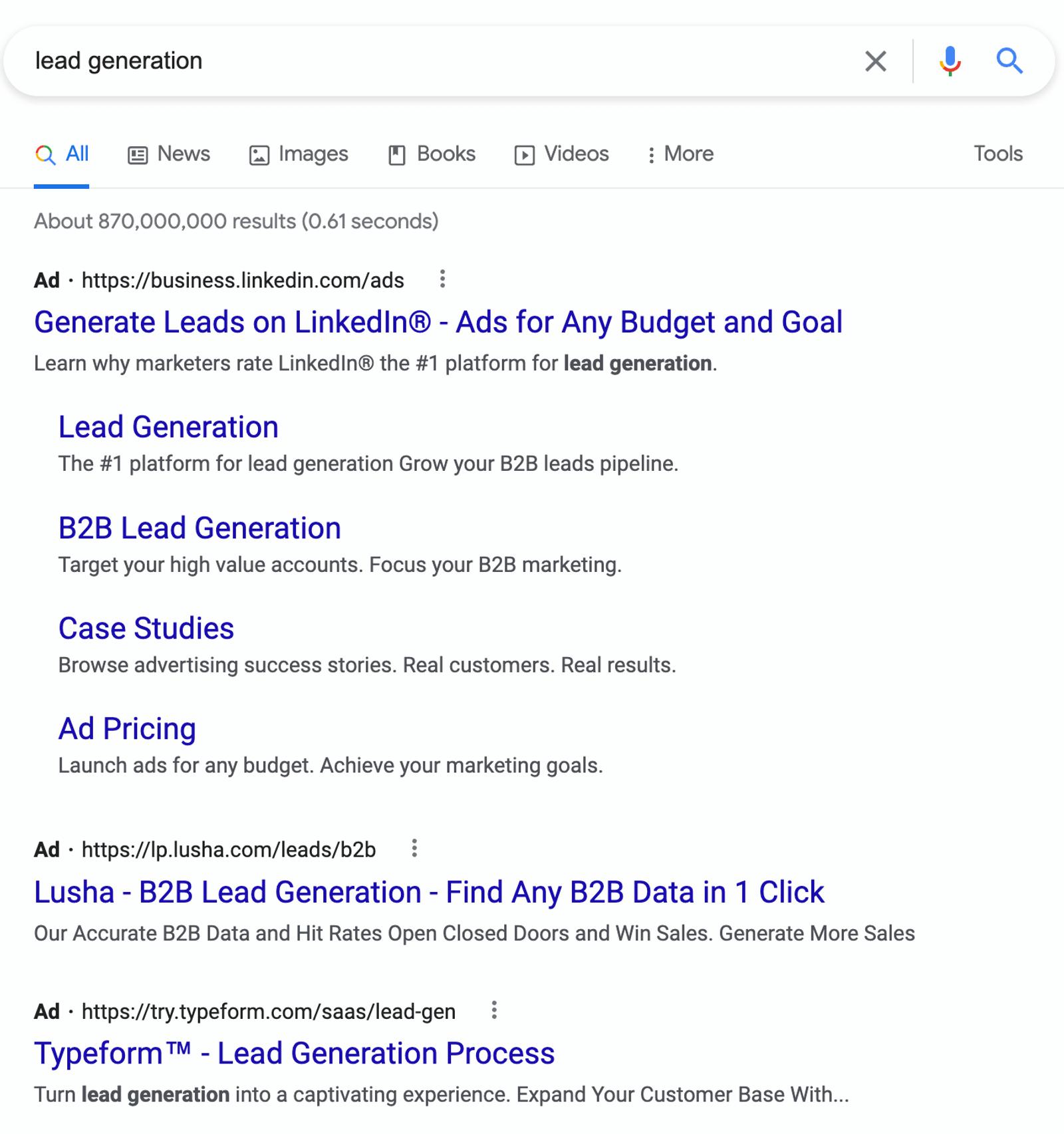
Lead generation Google Ads
You might run Google Ads for a certain keyword, positioning your result above any organic search result. For example, the social media platform LinkedIn and lead generation software Lusha both advertise for the keyword “lead generation.”
4. Social media
Social media campaigns can be a great way to generate leads for your business, as long as your offer cuts through.
Take this sponsored Facebook ad from Instapage.
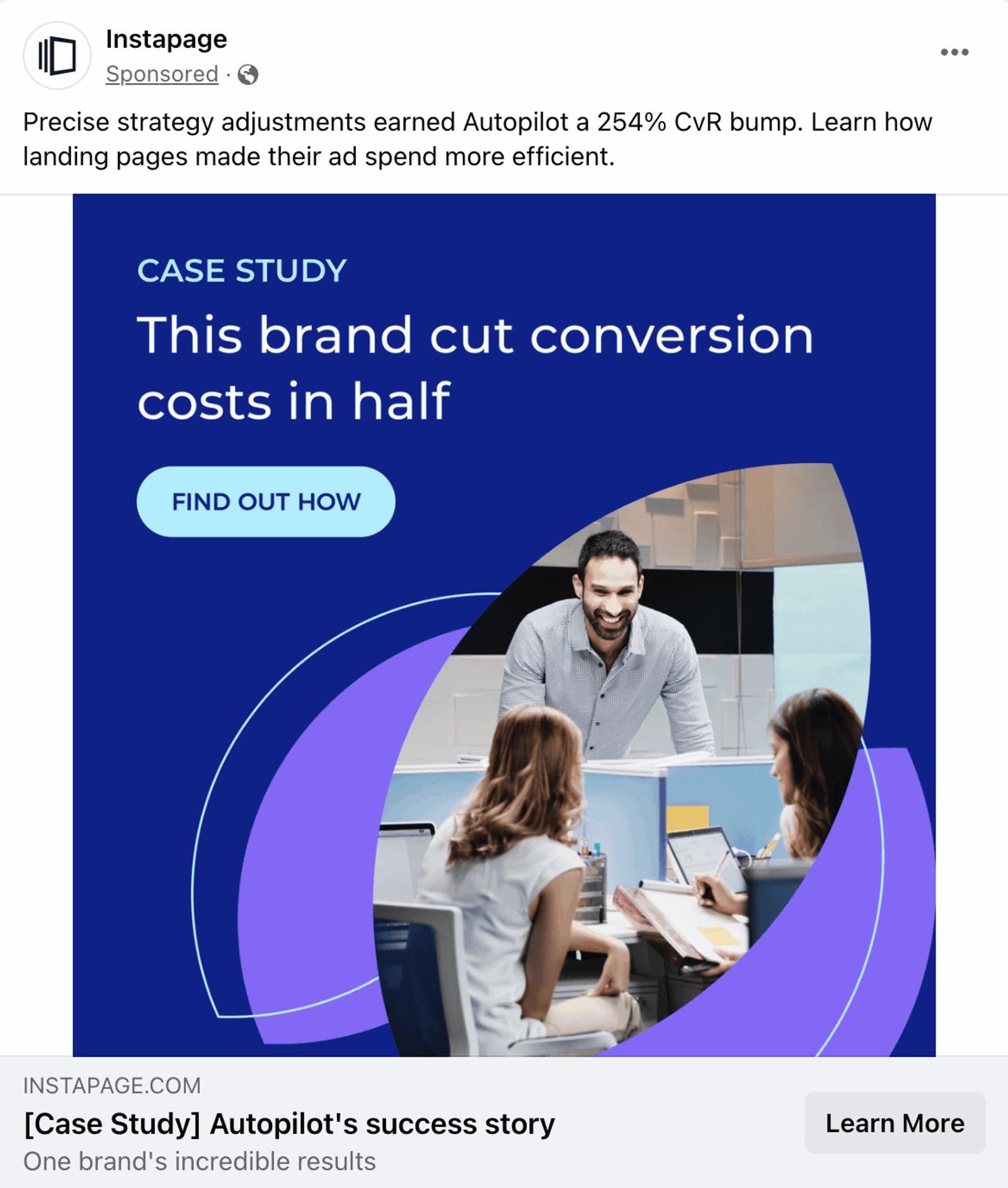
The effectiveness of this ad depends on the sales funnel stage the reader is at. In this case, I’ve viewed a lot of different content on Instapage’s site, so they’re banking on the notion that I’m more of a mid-funnel lead and would be persuaded by a downloadable case study.
However, if this ad were served up to someone who had never heard of Instapage, it would be far less effective.
5. Digital advertising
Digital advertising is essentially running banner ads on other companies' websites. It’s an excellent way to grab attention, but it works best if you advertise on a super-relevant website.
For instance, this digital ad for Postclick appears on a weather forecast site.
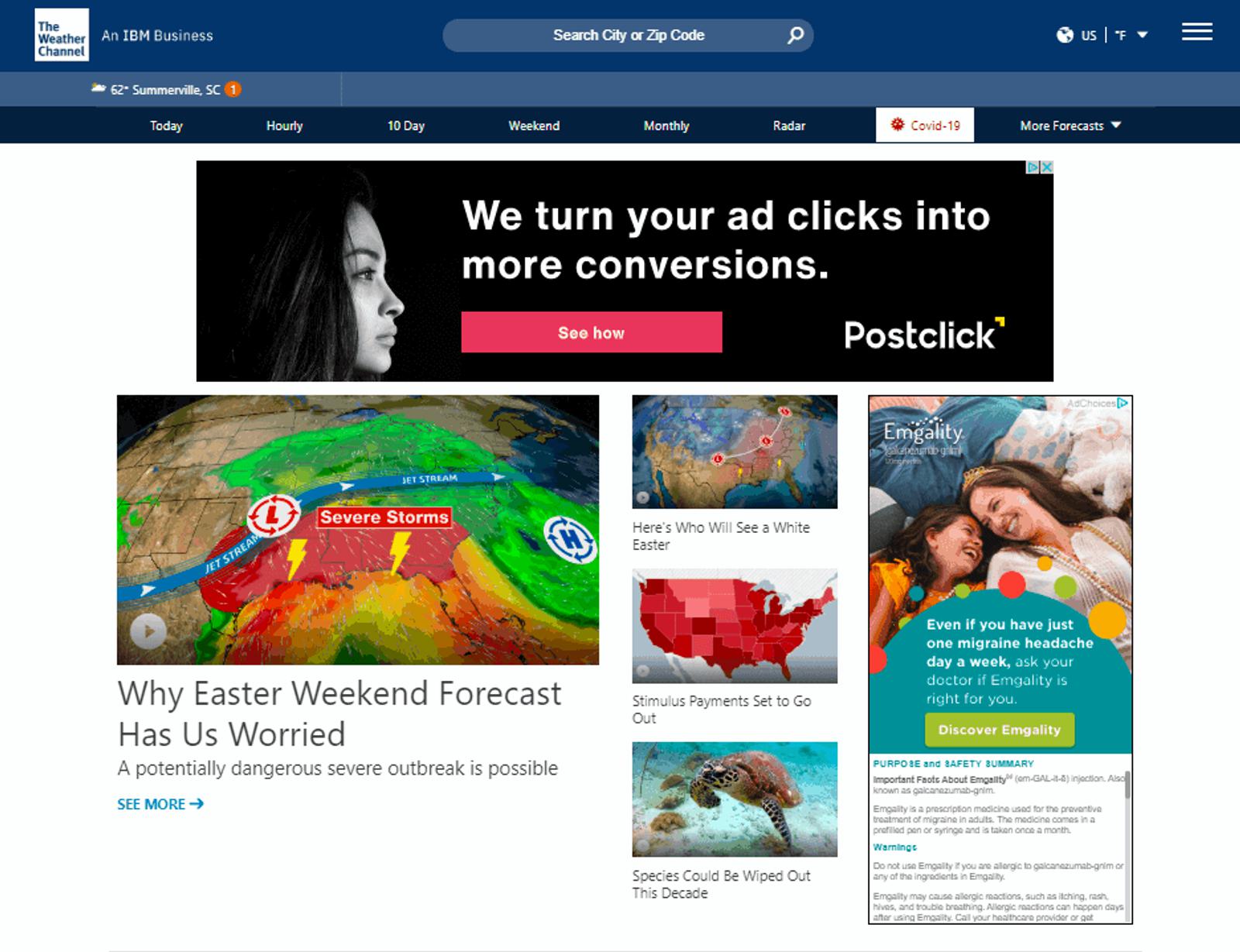
Postclick digital ad (Image Source)
Being a digital advertising platform, Postclick would likely see better results running this ad on a site like Adweek, which caters specifically to its target audience (digital marketers).
How to improve your lead generation: 5 best practices & tips
Want to make the most of your lead gen strategy? Review these five best practices and fold them into your marketing efforts to drive more leads into the sales funnel.
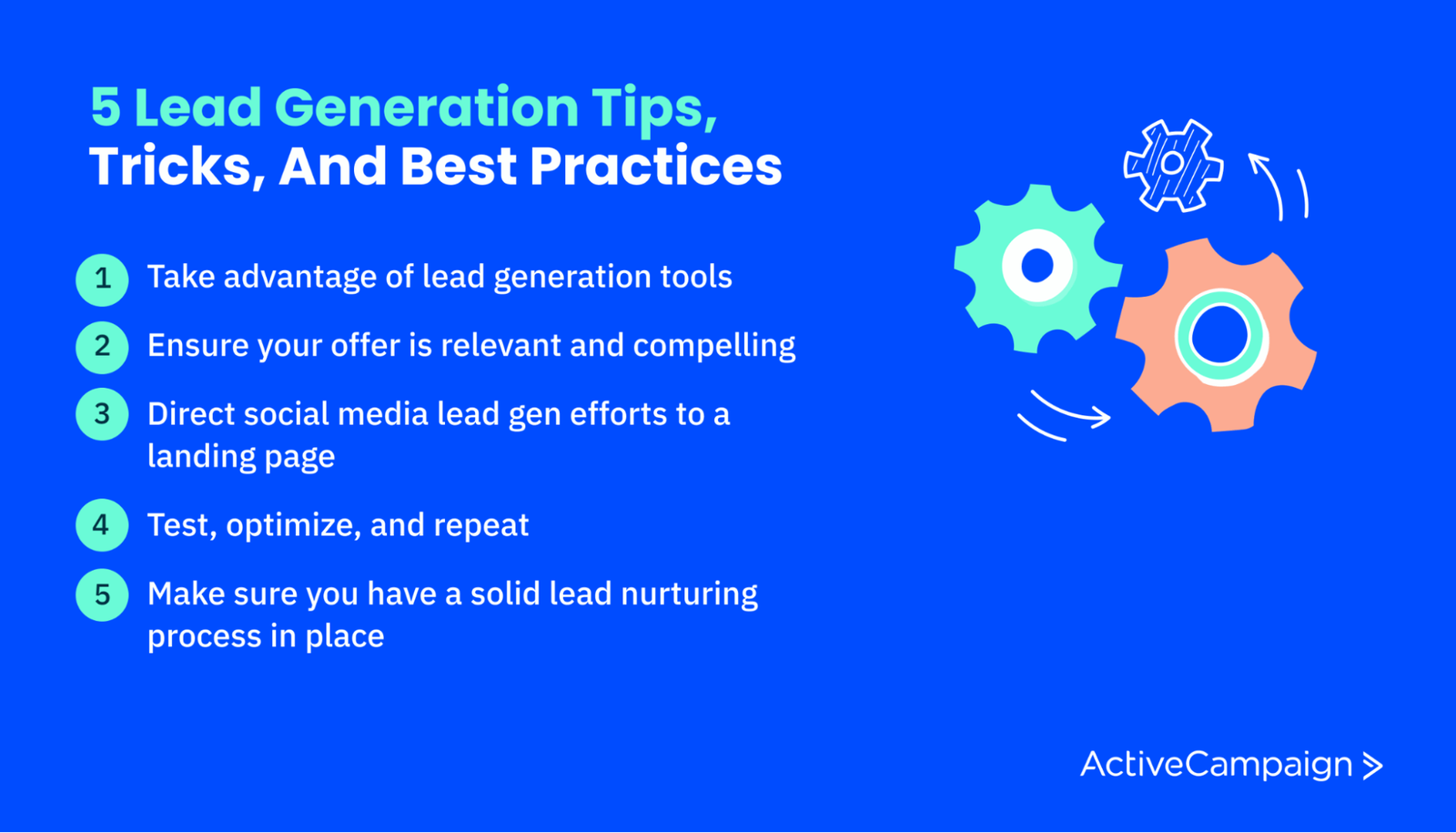
1. Take advantage of lead generation tools
You don’t have to go it alone: there are many super helpful software tools out there to help you automate the lead gen process and keep your pipeline full.
For example:
- ActiveCampaign - Marketing automation
- Leadfeeder - Web visitor analytics
- Apollo.io - A sales intelligence platform
- LinkedIn Sales Navigator - Relationship-based selling
- Optinmonster - Forms, popups, and gamification
- Drift - Conversational chatbots
Use these innovative software tools to make your lead generation process repeatable and access key insights like which segments perform best.
2. Ensure your offer is relevant and compelling
Lead generation offers are just that: offers.
Don’t expect that because you put an ebook in front of a customer’s face, they will want to download it immediately.
Take this ad from Twilio. How compelling is an infographic with a few statistics about customer engagement?
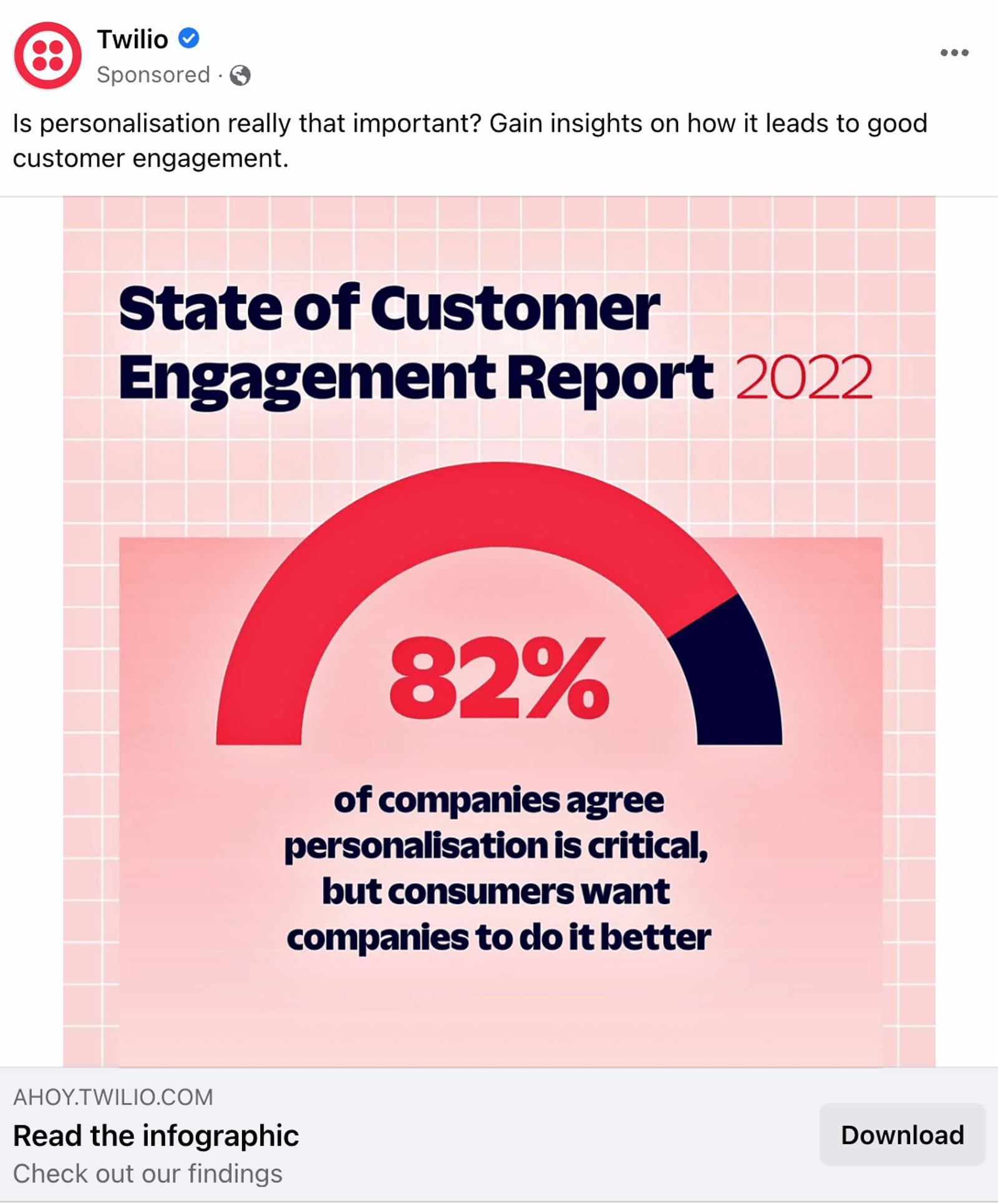
Twilio lead engagement ad
Is that an offer worth handing an email address over for, or should that be free content? If you use gated content (like the above) to generate leads, your offer needs to be valuable and, most importantly, actionable.
Take this lead gen ad from Foundr magazine, which is much more compelling and actionable.
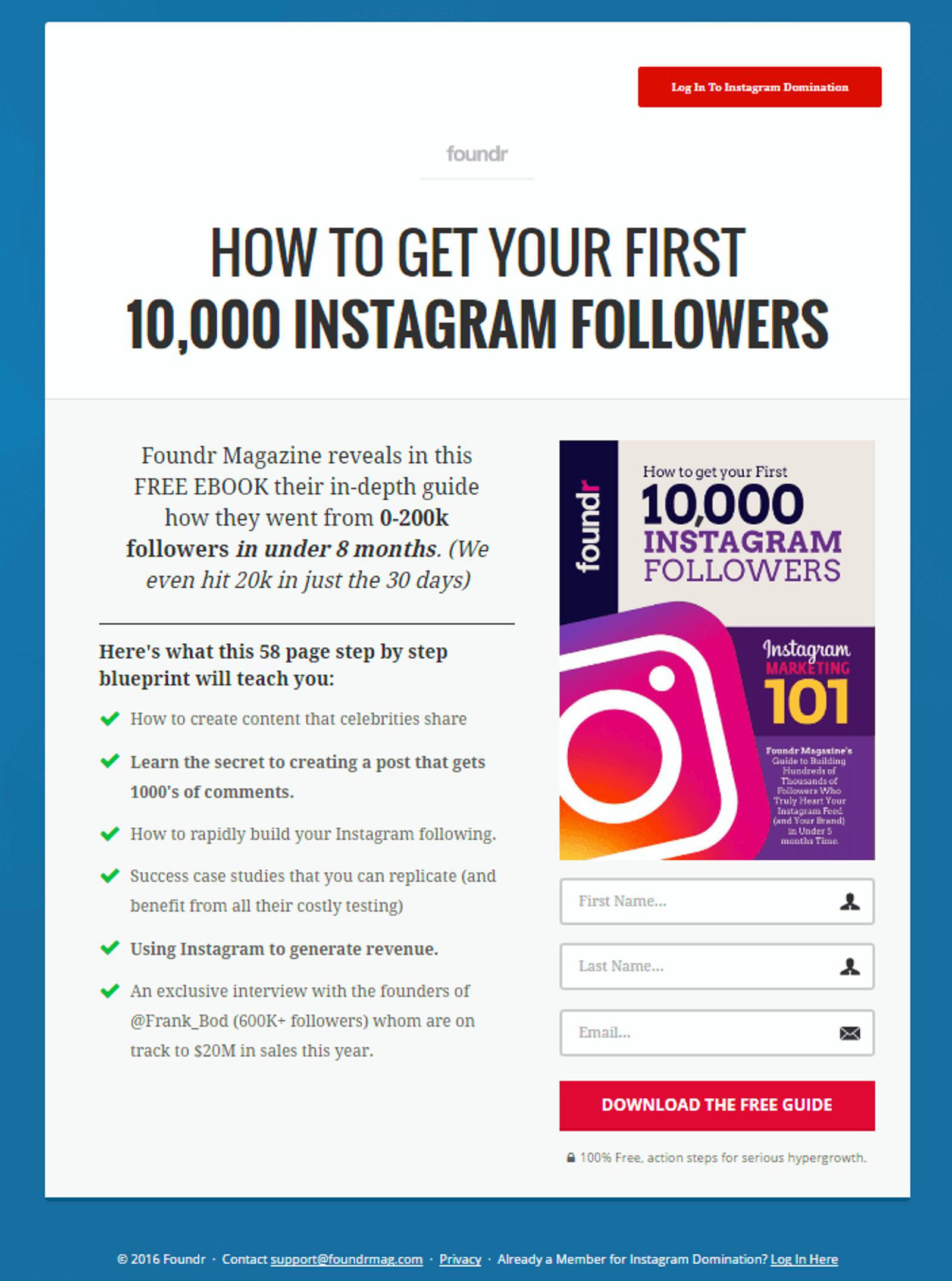
Foundr lead gen guide (Image Source)
3. Adapt your social media lead gen approach to each platform
Running the same lead gen ad on every social media platform is largely ineffective. These platforms each exist for a reason: they offer a different content experience for users. So, your lead gen approach should be different on each platform.
Take Subway, which uses a simple short text post with a video on Twitter.
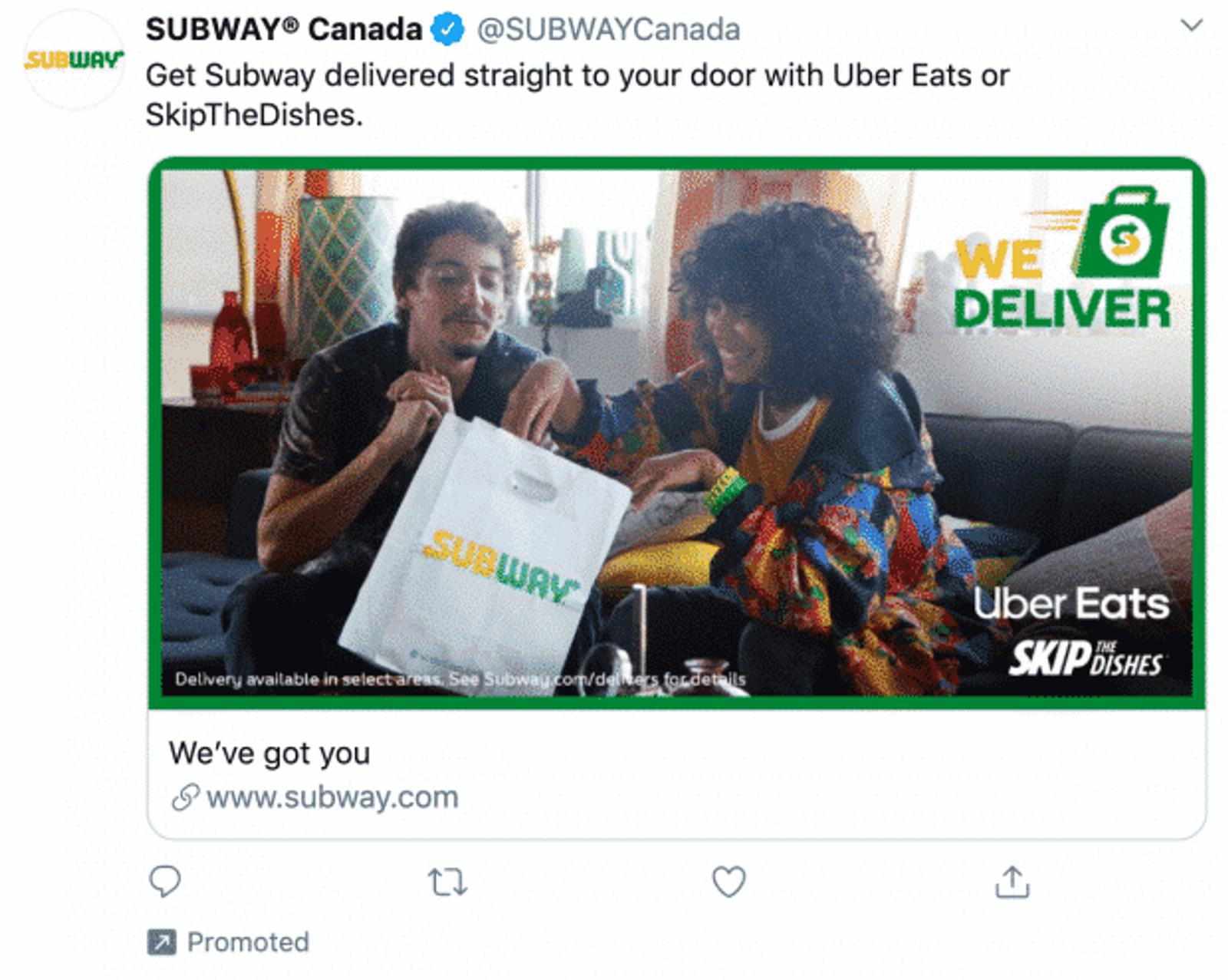
Subway Twitter ad (Image Source)
On Instagram, however, they lean into meme culture, so their ads are contextually relevant.
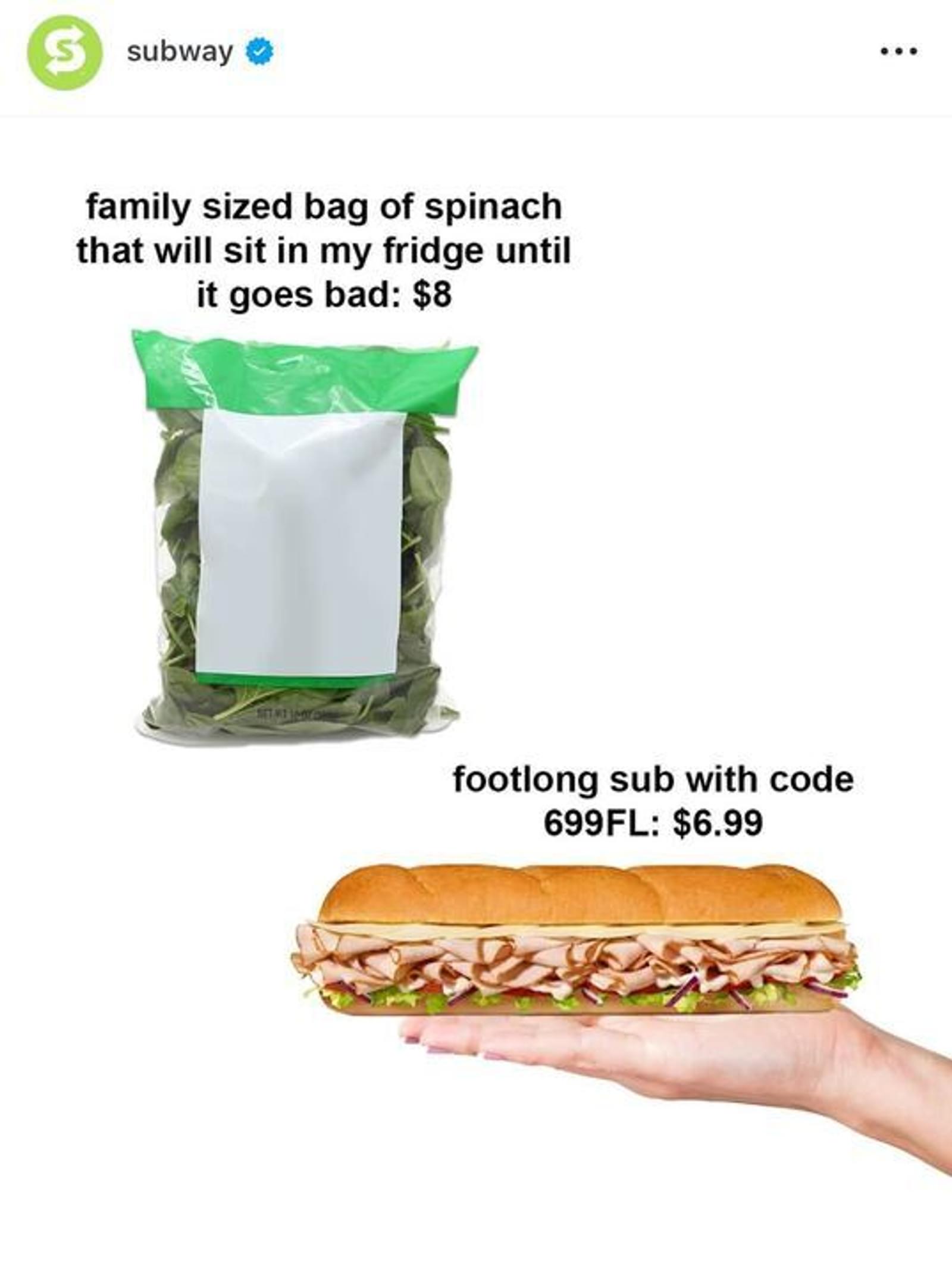
Subway Instagram ad (Image Source)
4. Test, optimize, and scale
Despite your best customer research, analysis, and planning, you won’t know what works until you run it. So, when you’re first getting started with lead generation efforts, be prepared to start with a bit of testing. See what works best, then double down on that.
For example, you could run two kinds of retargeting ads on Facebook, one using the carousel display and one using the collection display. Run both ad types with the same ad spend to the same audience, determine which works best, then run with that for the remainder of your campaign.
5. Make sure you have a solid lead nurturing process in place
Lead generation is not the final stop on the revenue-generating train. Once you’ve captured a customer’s details, you’ll probably need to do some nurturing to get them to a point where they’re ready to engage with a sales rep.
That is, you need a solid automated lead nurturing process.
Learn more about this subject in our dedicated guide: What is Lead Nurturing? Strategy, Tips, and How-tos
Automate Lead Generation
So, what now? 3 quick tips to qualify your leads
So, what happens once you’ve captured that lead and your potential customer’s data is sitting in your CRM? Do they get a phone call from a sales rep? Or go into a lead nurturing email campaign?
While every company’s process will differ, implementing some lead qualification criteria is a great strategy. Here’s how.
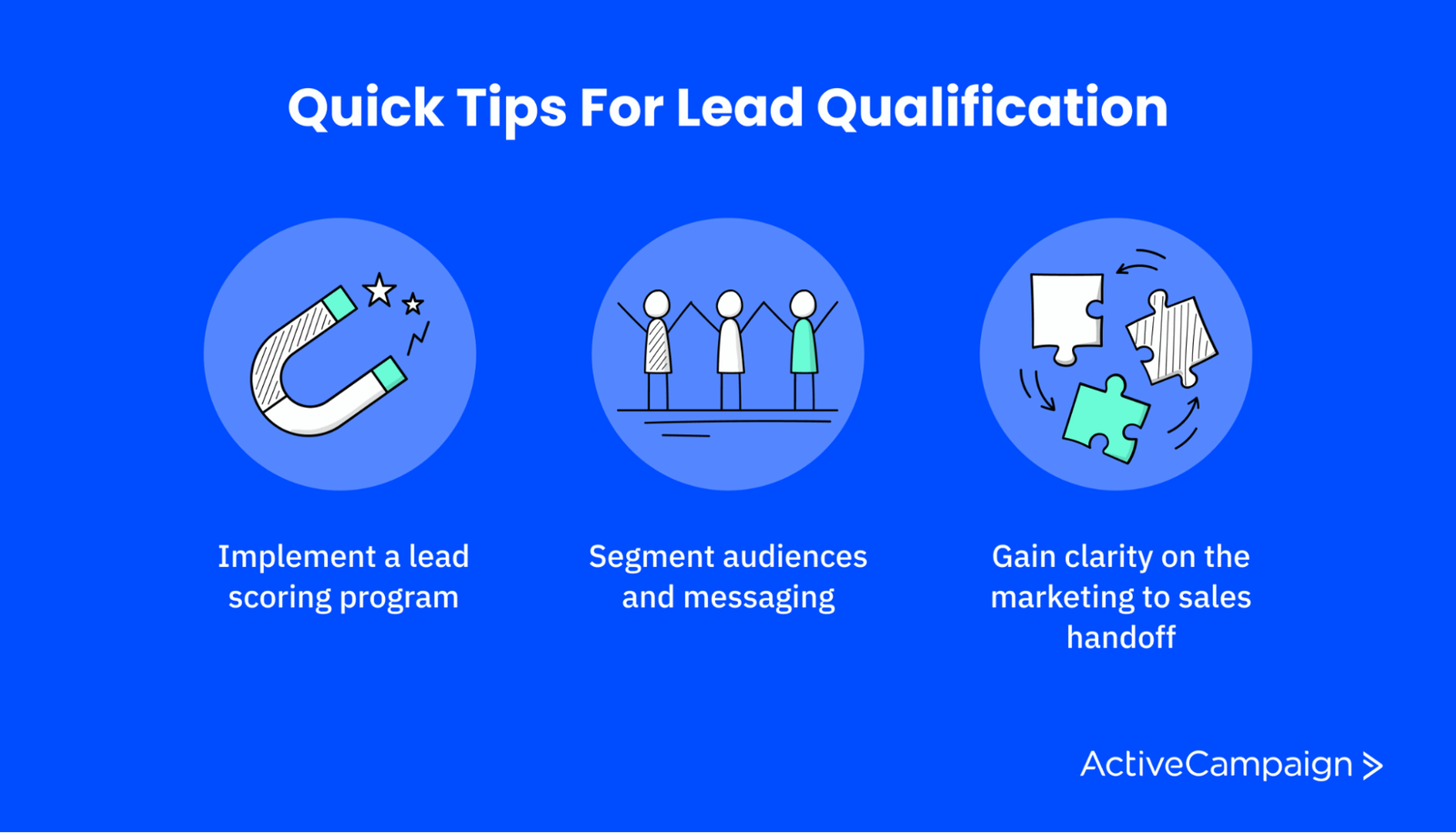
1. Implement a lead-scoring program
Lead scoring is the process of ranking and prioritizing leads as they come in, based on a few specific criteria you define. The intention is to understand how quickly sales reps should reach out. That is, which leads are closest to buying?
For example, you might assign points based on specific actions or characteristics:
- Has watched one webinar
- Has annual review over $1m
- Has followed us on LinkedIn
Then, you’d set thresholds for these points. Maybe a marketing-qualified lead has 50 points, but they don’t become a sales-qualified lead until they accumulate 100 points.
2. Segment audiences and messaging
Move your leads through the funnel quickly by segmenting audiences based on specific characteristics and ensuring messaging is relevant to that specific segment.
Take Toggl Plan. They have three main audience segments:
- Agencies
- Consultancies
- Implementation teams
Toggl Plan should include a question on their lead gen form that asks the customer to specify which category they fall into. Then, the lead nurturing sequence will trigger based on which main audience the lead falls into.
3. Gain clarity on the marketing-to-sales handoff
The last step is to be clear on when marketing should stop engaging with a lead and when sales should take over. There is no handoff in some instances (such as in account-based marketing programs); the two teams collaborate throughout.
In others, the handoff might take place when the customer becomes an SQL, for example.
Accelerate your lead generation with ActiveCampaign
ActiveCampaign makes it easy by giving you the tools to capture, track, and nurture leads automatically. From forms and landing pages to powerful automation and AI-driven insights, it helps you turn curious visitors into ready-to-buy customers.
Embedded forms and pop-ups
ActiveCampaign’s drag-and-drop form builder lets you create sign-up forms, surveys, and lead magnet opt-ins in minutes.

Whether you need a simple email capture form or a more detailed questionnaire, you can embed it anywhere—on your website, blog, or even an ActiveCampaign landing page. With fully customizable designs and triggers, you can capture leads at multiple touchpoints without any coding.
Landing pages
Need a dedicated page for an event, promotion, or lead magnet? ActiveCampaign’s landing page builder lets you design high-converting pages quickly (no coding needed).

Say you're running a webinar or offering a free ebook. ActiveCampaign allows you to build a page that matches your branding and integrates seamlessly with your lead capture forms.
Integrations and lead sources
ActiveCampaign plays well with over 900+ integrations, making it easy to pull in leads from anywhere. Running Facebook or Instagram ads? Use the Facebook Lead Ads integration to send ad leads directly into ActiveCampaign; no manual importing needed.
Roland, the iconic brand known for their synthesizers, successfully used this to add 5,000 new leads directly from Facebook ads (and achieved a 50% increase in overall lead generation) in just one month.
Read their story.
Need to collect leads from chatbots, e-commerce stores, or appointment schedulers? ActiveCampaign ensures every lead flows straight into your CRM and automation sequences.
Conversational lead capture
Want to engage visitors in real time? ActiveCampaign’s Conversations add-on lets you add a chat widget to your site so you can talk to leads while they’re browsing. Even better, the chat tool can automatically collect contact details and qualify leads just like a form would, but with a more personal touch. Perfect for businesses that rely on quick responses to convert leads.
Advanced automations that work for you
Capturing leads is only half the battle. You also need to follow up at the right time.
ActiveCampaign’s automation builder lets you set up workflows that instantly nurture leads. For example, the moment someone fills out a form, they can get a personalized email sequence, be tagged based on their interests, and even be assigned to a sales rep if they meet certain criteria.

And with AI-powered tools, ActiveCampaign goes even further. Machine learning can predict lead behavior, segment contacts based on engagement, and identify high-intent leads for your sales team to focus on. Instead of chasing cold leads, you can prioritize the people who are most likely to convert—automatically.
Ready to dive in? Start a two-week trial of ActiveCampaign to get started.
Lead generation FAQs
Lingering questions? We’ve got you.
What are the four steps of the lead generation process?
- Customer research and needs identification
- Initial contact and awareness generation through free content
- Customer engagement with content
- Lead-gen-focused ad with some form of a lead magnet (such as a downloadable guide)
How do you define a lead?
There are three main types of leads.
- Marketing qualified lead (MQL): An MQL has engaged with your marketing—maybe they downloaded an eBook or opened your emails—but they haven’t fully proven they’re ready to buy. Some businesses track deeper intent signals, like visiting the pricing page, before calling them an MQL.
- Product qualified lead (PQL): A PQL has not only tried your product (via a free trial or freemium plan) but has actively used it and found value. Just signing up isn’t enough—they need to show real engagement, like inviting teammates or setting up key features.
- Sales qualified lead (SQL): The most ready-to-buy lead. SQLs have met specific engagement criteria (like interacting with multiple content pieces or testing the product) and fit your ideal customer profile. They’re primed for a sales conversation.
In short: MQLs are curious, PQLs are hands-on, and SQLs are ready to talk business.
How does lead generation work in digital marketing?
Lead generation in digital marketing is all about attracting potential customers online and getting their contact info so you can follow up. It usually starts with content or ads that grab attention, like blog posts, social media ads, or free resources (ebooks, webinars, discounts).
When someone shows interest (by signing up, downloading, or clicking), their info goes into your system. From there, businesses nurture those leads through emails, targeted ads, or free trials until they’re ready to buy.
What are the common pain points of lead generation?
Lead generation comes with some common headaches. Here are a few pain points businesses run into (and why):
- Getting quality leads: Not all leads are worth chasing. Some people sign up for freebies but never intend to buy, leaving you with a list full of dead ends.
- Standing out in a crowded market: With so many brands fighting for attention, it’s tough to make your message heard, especially if your competitors are running the same types of ads or content.
- Converting leads into customers: Even after capturing a lead, getting them to buy takes effort. Poor follow-ups, weak nurturing, or unclear messaging can cause them to lose interest.
- Keeping up with changing algorithms: If you rely on platforms like Google or Facebook for lead gen, algorithm changes can tank your traffic overnight, forcing you to constantly adjust your strategy.
- Measuring success: Collecting leads isn’t enough; you need to track if they’re actually turning into customers. Many businesses struggle with knowing which tactics work and which are a waste of time.


